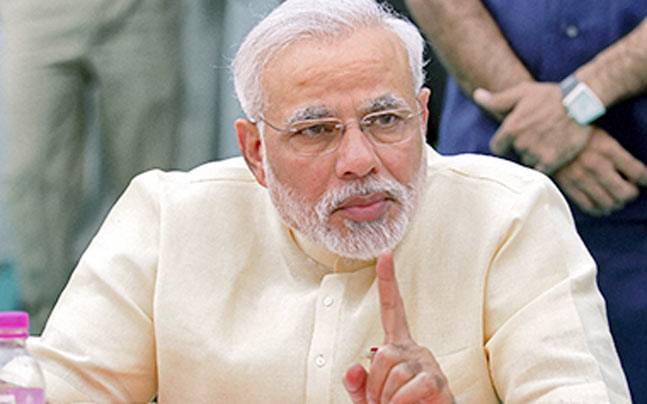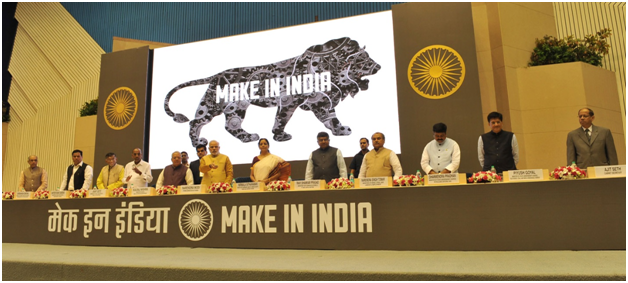
In 2014, Narendra Modi famously remarked that he was a lucky prime minister who had brought the bounty of low crude oil prices, which in turn provided enough fiscal room to the government to kick-start the economy.
After four years, the same factor – low oil prices – has completely reversed and is now beginning to bite the economy and Modi’s political prospects for 2019. What’s worse is that in the intervening four years, the Modi government has failed to leverage the many advantages of low oil prices. Nowhere is this better seen than in the declining trend of GDP growth – 7.9% in 2015-16 to about 6.6% estimated in 2017-18.
The last quarter of 2017-18 has shown an uptick in GDP but the impact of climbing oil prices may dampen the sustainability of a higher GDP growth in general.
For every $10 increase in international crude prices there is a 0.2% to 0.3% decline in GDP, a worsening of the current account deficit by 0.4% and an increase in consumer inflation rate of about 0.6% as higher diesel prices feeds into the cost of everything else.
It is these macro parameters that will be closely watched over the next six months as oil prices remain elevated and the Indian currency weakens progressively. Market experts are back to predicting the exchange rate crossing Rs 70 to a dollar as 2019 approaches. The rupee is among the worst performing Asian currencies this year. Foreign institutional investments (FII) in equities have virtually dried up this fiscal.
To be fair, this is a trend that is playing out across many emerging economies in Asia. Nobel prize winning economist Paul Krugman recently put out a series of tweets where he likened the sudden weakening of Asian currencies coupled with drying up of portfolio capital inflows into the emerging economies as a possible replay – though a milder version – of the Asian financial crises of the late 1990s.
The point though is this: if the broader trend fructifies, India cannot escape it. A number of global events are coming together in a random and chaotic manner. The US is raising interest rates which can make capital flow back to better yielding American bonds. The US Federal reserve which expanded its balance sheet (basically printing more money) from about $800 billion in mid 2008 to $4.5 trillion in 2016 is in the process of making a calibrated withdrawal of this excess liquidity in the system over a few years.

On really doesn’t know how this withdrawal of several trillion dollars will impact emerging Asian economies, which had benefited from the massive dollar liquidity supply. All these moneys are sitting in various asset classes like real estate, stock market, gold, commodities and so on.
Since the dollar is a safe haven currency and the US economic base much wider and deeper than those of the emerging economies, it has greater capacity to absorb the volatility in the price of various asset classes caused by such a massive liquidity withdrawal exercise. The smaller economies will suffer more on account of such seesaw movement in the financial markets.
What adds to these uncertainties in the global financial economy are the very real economy problems caused by the Trump administration’s attempts to impose tariff and non-tariff barriers against many developed and developing economies which could reduce overall trade and output at the global level. Krugman’s warnings about another 1990s-type Asian financial crisis possibly takes all these factors into account.
India is not insulated from this churning uncertainty at all. Modi and his advisors would do well to stop tom-tomming India as the lone shining star among BRICS economies as they had been doing since 2015. Nothing can be farther from the truth. While the tender conditions were awful, there is a broader message in no bids being received for Air India in what was a global stake sale process. Earlier there was very little interest from global oil exploration majors for India’s oil blocks. Global investors are waiting to see if domestic private investment will revive in India. We all know private investment is yet to take off in the four years of the NDA regime.
This time India has additional vulnerability in terms of a somewhat broken banking system should a financial crisis engulf this broader Asian region. Recently a Bloomberg report quoted Moody’s Investor Services assessment which put India and Indonesia as the two most vulnerable economies from an external sector standpoint.
While Modi was waxing eloquent in Indonesia about how Moody’s had upgraded India’s economy in 2016 for the first time in 13 years, his advisors failed to inform him about the latest report by the same organisation which put India as the most vulnerable in the external sector among Asian peers.
Moody’s calculated the vulnerability by assessing how much of our forex reserves could get depleted in the event of a financial crisis. This is determined by the ratio of the forex reserves which is in the nature of a liability – that is to be paid back within a year. In India’s case, 74% of its forex reserves are in the form of dollar liabilities with a residual maturity of one year.
This includes short term debt, long term debt maturing within a year and NRI deposits maturing within a year. Remember during the 2013 external sector crises, Raghuram Rajan had to sweeten a deal for NRI depositors who were incentivised to bring in short-term deposits with the central bank taking the risk of exchange rate volatility.
The RBI may have to do a similar deal with the NRIs this year if the oil prices move even higher, the dollar inflows remain weak and exports don’t pick up in the next few quarters.
Recently the RBI greatly liberalised foreign portfolio investment in government debt by allowing FIIs to buy debt with just one year maturity. This was done largely to stem the outflow of capital being seen across Asian economies. India too has seen about $5 billion of net FII redemptions in government debt this year. This has caused some worry.
The larger problem today is that any crisis in the global finance or even Asian finance, can cause a setback to the real economy for a couple of years. Unfortunately, India is not free from such regional or global financial contagion.
More pertinently, Modi’s post-demonetisation drive to effect greater formalisation and financialisation of the economy, hailed by global businesses, makes India’s real economy even more vulnerable than before in the event of a global financial crisis.

